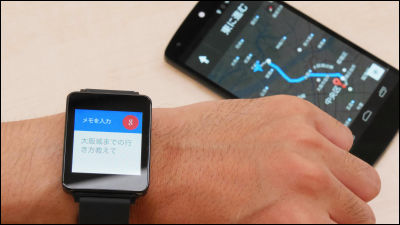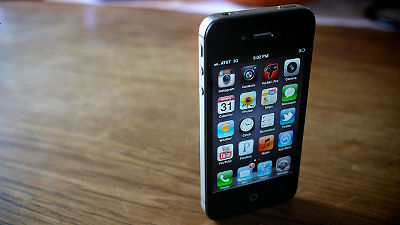Review and benchmark results of LG Watch Sport with Android Watch 2.0 are released, what is the change in UI with the new OS?
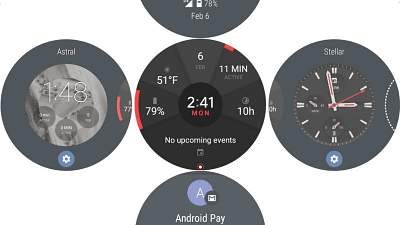
From February 10, 2017, in the United States, "LG Watch Sport" and "LG Watch Style" with Google's new smart watch OS "Android Wear 2.0" will be on sale. Ark Technica of Tech series media has been reviewing LG Watch Sport ahead of launch, and it shows how the screen UI of Android Wear 2.0 is in addition to the appearance of the product.
LG Watch Sport review: Google's bulky watch breaks free from the smartphone | Ars Technica
https://arstechnica.com/gadgets/2017/02/lg-watch-sport-review-googles-bulky-watch-lets-you-leave-your-phone-at-home/
This was used for review LG Watch Sport. On the screen, contents that summarizes information on the workout related center are displayed.
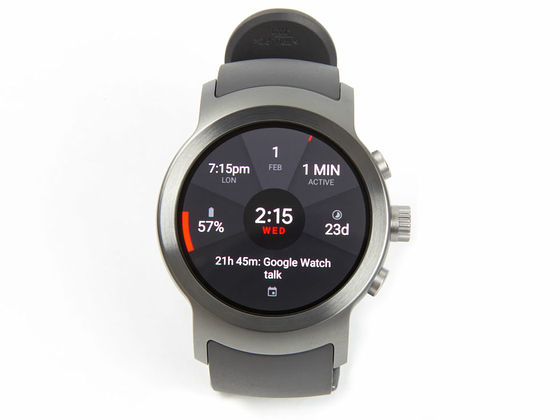
A small slit on the side of the left side is for the speaker. As expected, the sound quality does not seem to be expected.
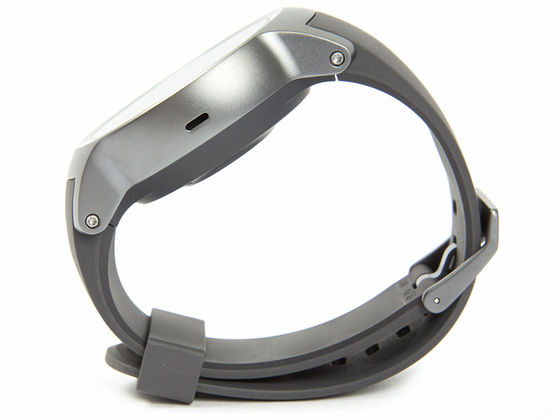
On the right side, there is one button on the dial and its left and right.
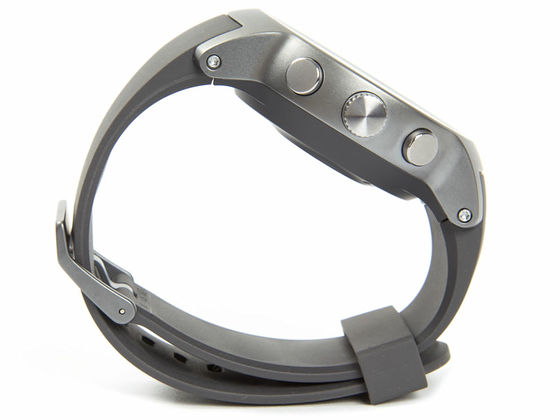
The heart beat sensor is built in the back side of the main unit, the part that comes in contact with the wrist. The triangular tool on the right is a special tool for removing the panel.
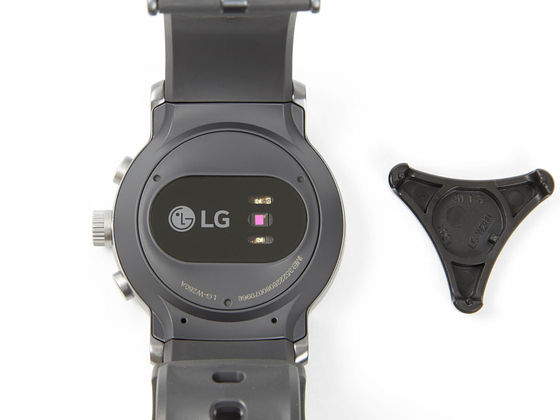
In this way, put the three feet on the dent of the panel and ...
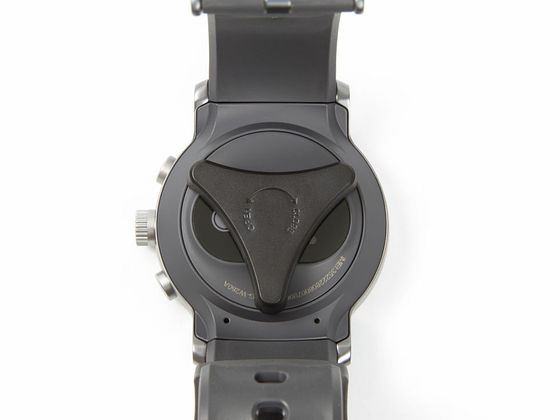
By turning it gently, the plastic panel will come off. There is a slot into which the SIM card is inserted in the place to remove. LG Watch Sport has built-in GPS sensor, LTE, NFC, Wi-Fi, Bluetooth antennas in the body.
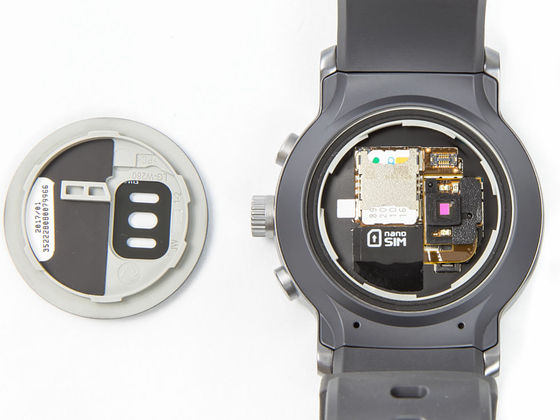
LG Watch Sport placed on the charger.
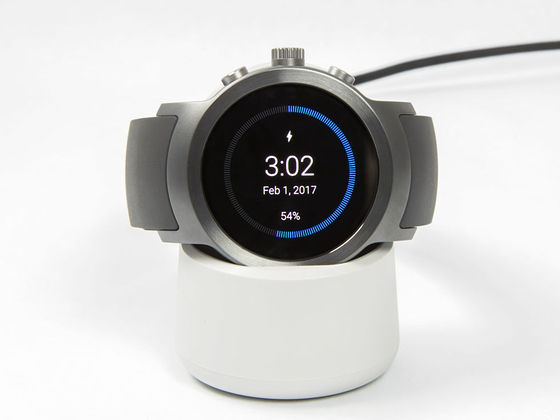
Wireless power supply is enabled.
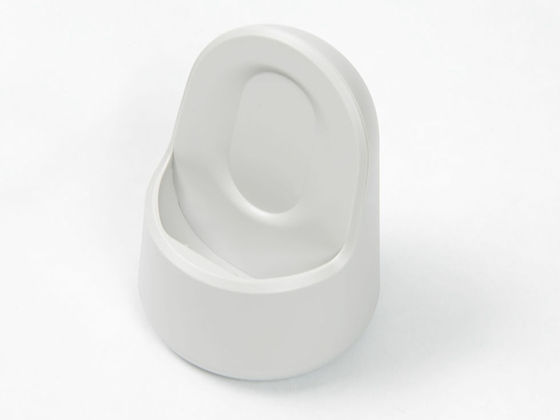
The size of the display is almost the same as Moto 360 (left) and Huawei Watch (right).
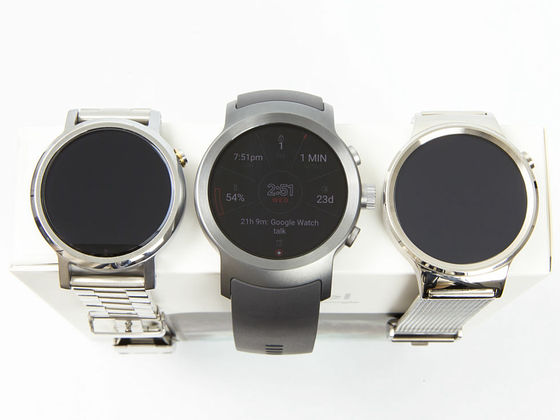
But from the side, LG Watch Sport apparently seems to be a thick body.
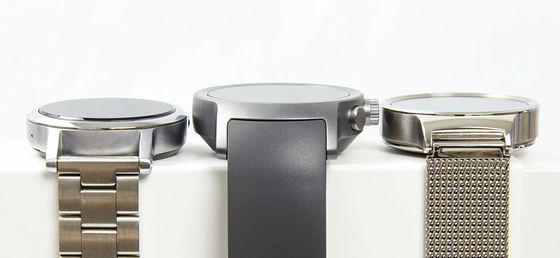
Various antennas are contained in the root part of the band. The area of several cm seems to be like a band, and actually it seems to be an extension of the main body. Moreover, the band seems to be a structure which can not be removed fundamentally.
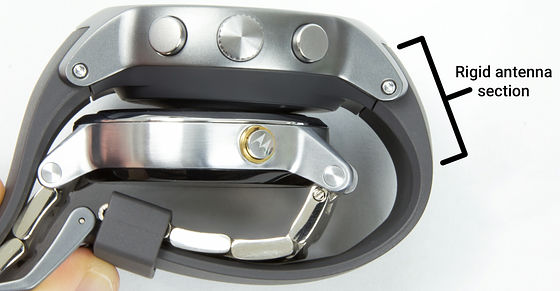
Of the three buttons on the right side of the main unit, the middle dial is assigned the return to home function and the scrolling action. The two buttons above and below the button can assign actions for each application.
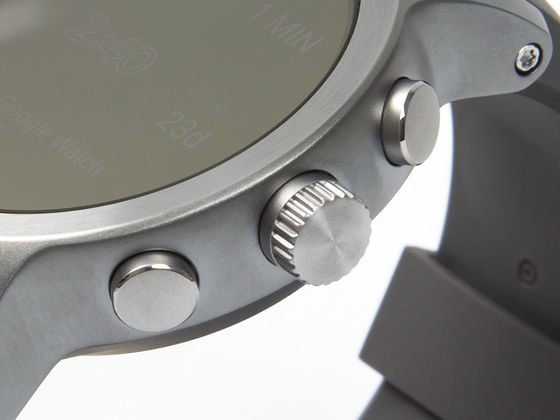
Numerous basic screens of Android Wear 2.0. Android Wear 1.x series has been changed from a white-based screen to a calm color tone of gray series. From the left, an ordinary home screen (an example), an application drawer (application list), a notification screen.

You can change the watch face by swiping left and right in the home screen. Also, pull down the screen downwards to quick setting to switch between aircraft mode and silent mode, and then pulled up to display Android Pay and notification history screen.
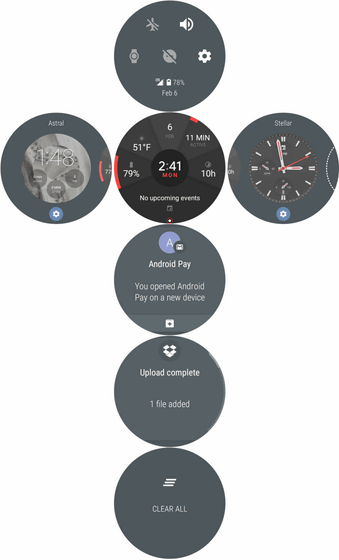
From the left, a screen that approves the actions of the Google Assistant screen, setting screen, and applications supported by Android Wear 2.0.

In the watch face, there is a widget slot called "Complication", which means that you can store your favorite widgets. It is possible to select items such as battery level, date, schedule, weather forecast, etc. Also it is possible to change background image.
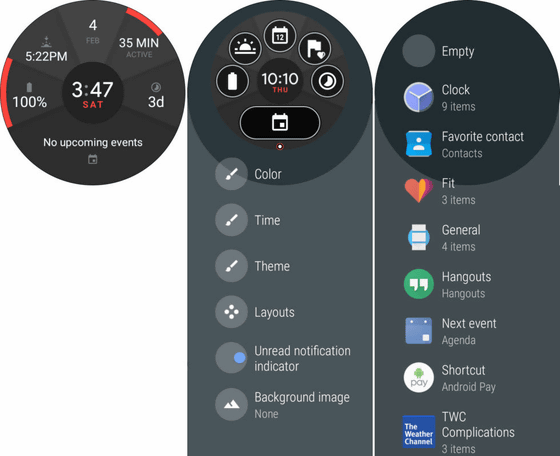
The difference between the notification screen of Android Wear 1.x series and 2.0 is like this. It is felt as sophisticated as a whole because the screen has changed to calm color.
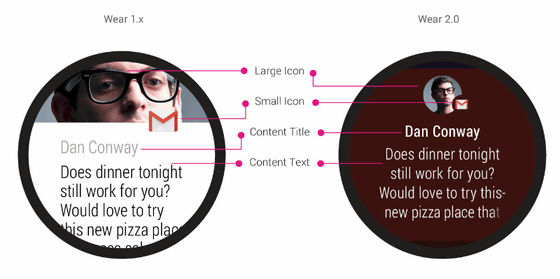
The difference between when there is an unread notification (left) and when there is no notification (right). It can be distinguished by the presence or absence of the red and white circle icon at the bottom part of the screen.
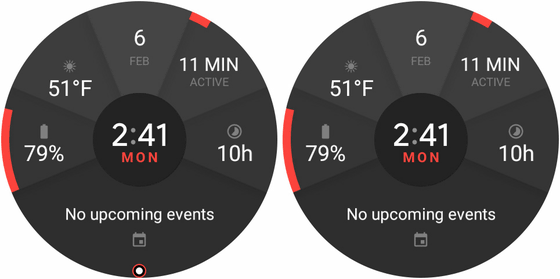
From Android Wear 2.0, it is possible to install the app by accessing the Google Play store by watch alone. The following screen shows the screen of the Google Play store, from the left, the application list, the search result, and the application detail screen are arranged side by side. The word "Install" is also displayed on the far right screen, so you can confirm that you can actually install from here.
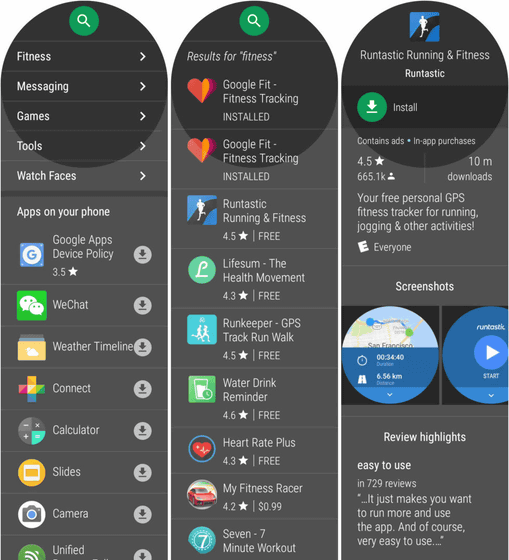
In the new UI, a green area is displayed at the top of the application screen, and when pulling down it appears that the navigation list is displayed. It seems that it can be accessed directly to the installed application list, home screen, setting screen.
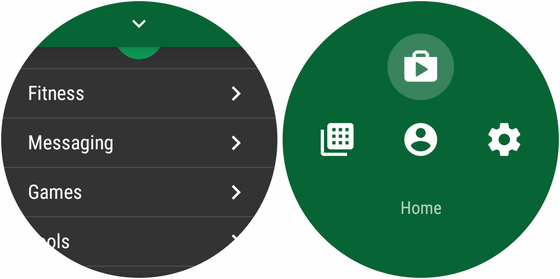
In Android Wear 2.0, it is possible to display a mini size QWERTY keyboard on the screen. According to a reporter from Ars Technica who actually touched it, it seems that it could be used without any problem though it is a function that everyone thinks "Will it be useful?" I heard that I was able to reply to messages and write e - mails as usual.

Copy function is also available

It also has a handwriting recognition function using voice input and fingers.

What seems to be useful is the ability to enter emoji by handwriting. When you write something like a smiley mark with your finger, it is converted to smile type emoticons.

Even when manually entering "pizza", "puppy", "seeing monkey" by illustration, several conversion candidates are displayed, and when scrolling the screen, it seems that the intended emoticon has been found mostly.
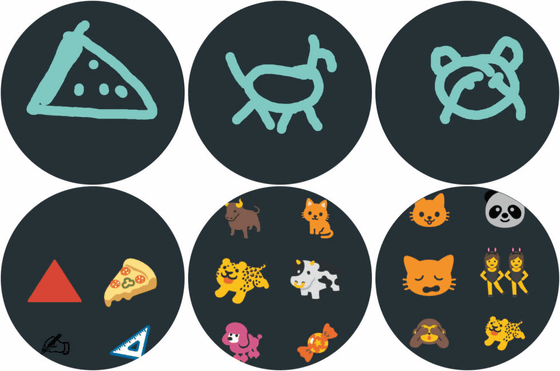
The screen of Android Pay where correspondence started from LG Watch Sport (and LG Watch Style). You need a smartphone to set up the card, but once you set it you can settle the watch alone. In addition, it seems that setting can be done using iPhone.

In order to use Android Pay securely, you need to turn on screen lock function. You can choose from three types of lock: "pattern" "PIN" "password".
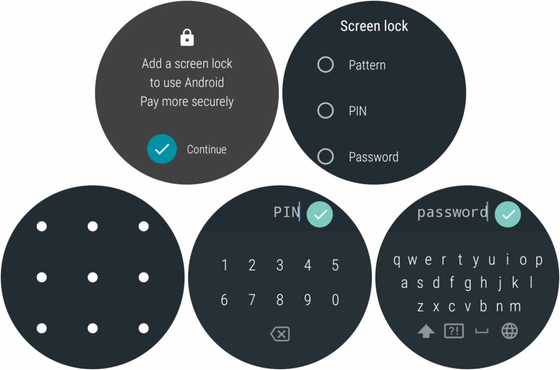
The screen of "Google Fit" used at workout is like this. Recording can be started with the screen or button, even if there is no smartphone on hand it is possible to track with built-in GPS function.
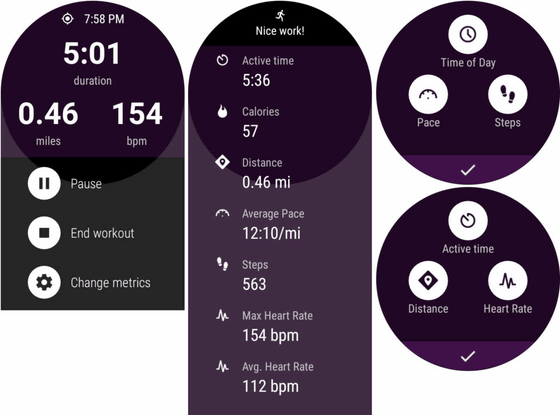
The screen which I actually tried tracking is kore. You can see that the recording is done without problems.
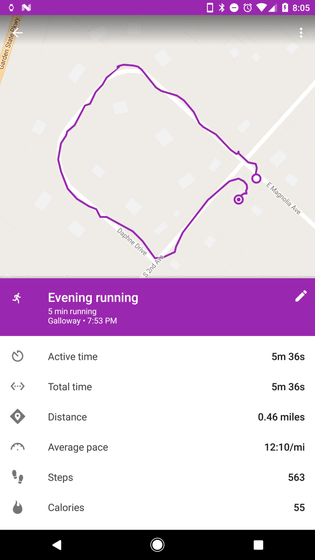
Google Maps screen. Because it is a small screen, impression that it is thoroughly sticking to the display.

In the memo · reminder application Google Keep, it is also possible to add new items in addition to checking the contents.

Google Translate can speak to a terminal and translate it into a foreign language.

Alarm operation / setting screen

Timer and stopwatch

Address book and call screen

Agenda of schedule management, "Find My Phone" searching for phone calls, and "Flashlight" function screen.

Weather display and Google Now screen. The convenience that you can receive the latest information with your wrist should be realized if you have used Smart Watch indeed.

"Setting", "Display", "Sound · Notification" setting screen
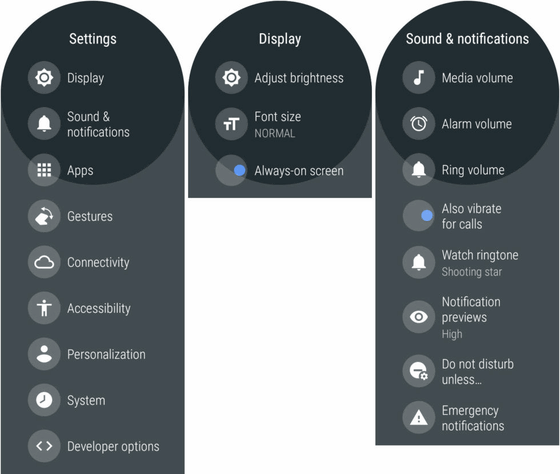
"Wireless connection" "Mobile network" "NFC" setting screen
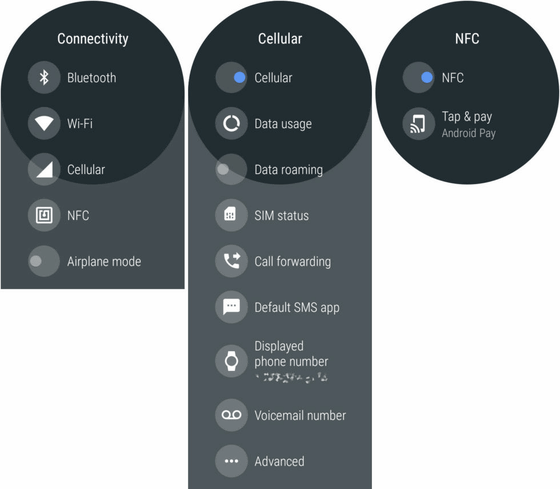
"Gesture" "Accessibility" "Personalize" setting screen
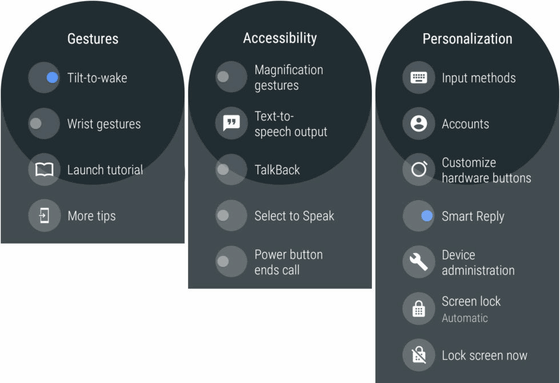
"Application", "Hangout", "Application authentication" setting screen
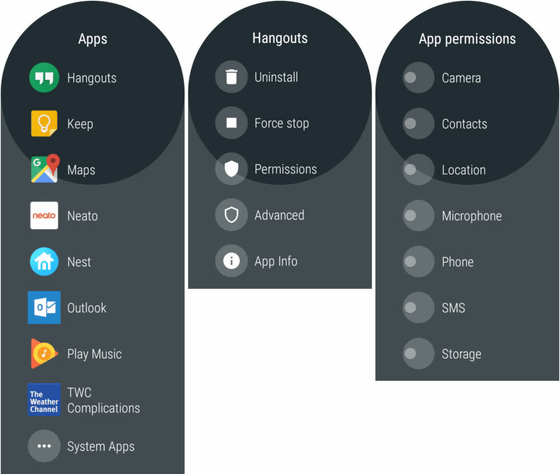
"System" "Terminal information" "Version information" screen
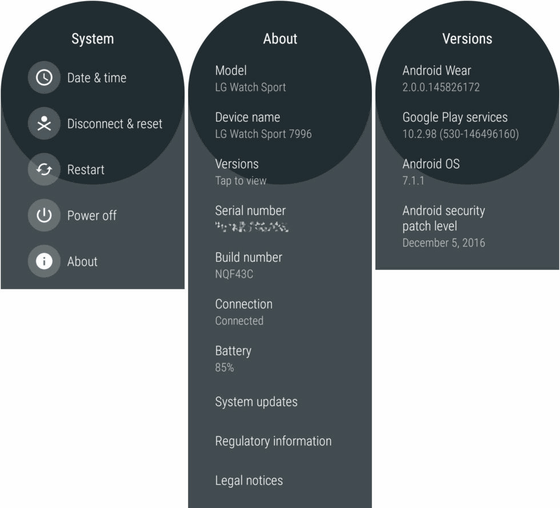
◆ Benchmark result
LG Watch Sport has adopted the 1.1 GHz Snapdragon Wear 2100 developed for wearable to SoC, but according to the review of Ars Technica, it seems that occasionally I felt weight in motion. Especially when launching applications such as Google Assistant, Android Pay, Google Hangouts, the loading icon was in a state of being displayed continuously for a few seconds. Once the application was launched it seems that you did not feel so inconvenient, but it seems that the loading time was felt troublesome anyway.
Ars Technica is using LG Watch Sport, Huawei Watch of Android Wear 1.5 generation, and "the latest in the world" of Android One terminal for IndiaMicromax Canvas A1We are using benchmark tests.
Staple of benchmark software,Geekbench 4Results of multicore testing using. The larger the number, the better the score, while the LG Watch Sport shows higher numbers than the Huawei Watch, but the value is lower than the Canvas A1 which is known for its slowness. Because the platform is different, direct comparison can not be done, but it may be a certain reference.
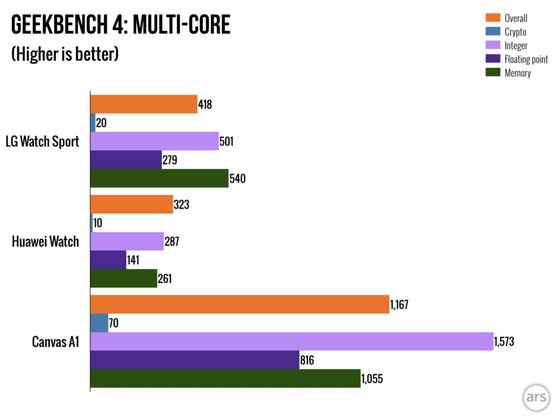
In the case of the single core test, two smart watches are almost aligned side by side. You can see that the opening with Canvas A1 is also getting smaller.
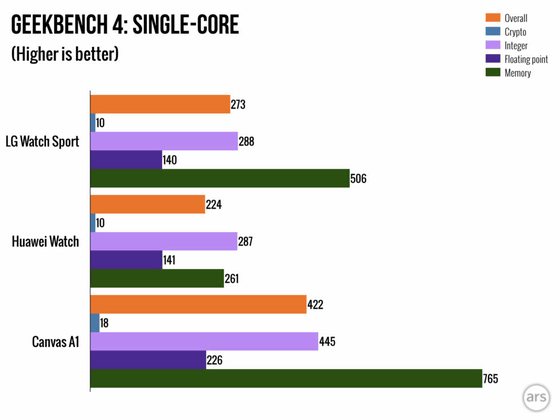
Ars Technica makes a rampant here to bring out Google's latest smartphone "Pixel XL" and compare it. Both the results of multicore and single core are draining great water is a challenge.
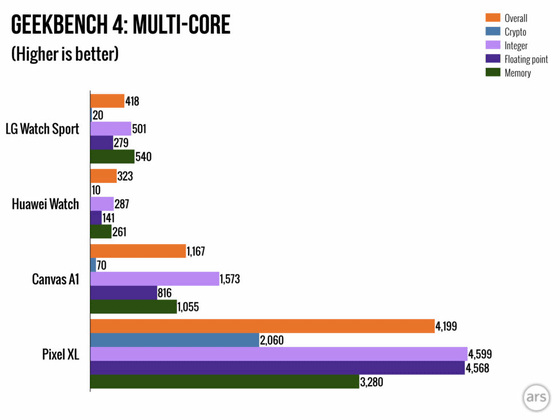
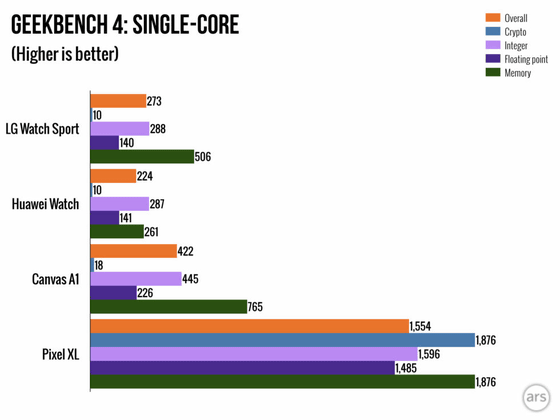
Graphic performance benchmark software,GFXBENCH 4Results using. A larger number indicates a higher performance. The "T-REX" test has burned out values of 8.8 fps to 10.0 fps for all three models, but Canvas A1 can not even activate the on-screen "Manhattan" test. Although the two smart watches were able to finish the test somehow, Huawei Watch had a low number of 0.4 fps.
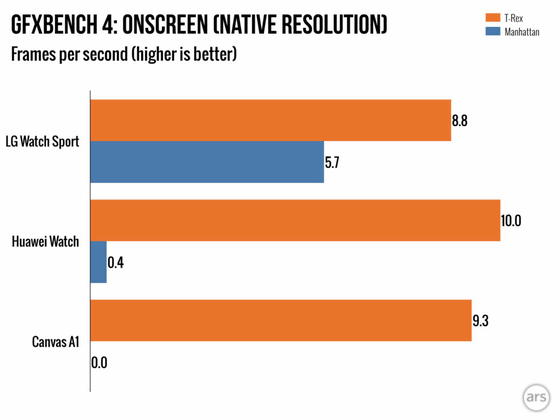
When the image quality reaches 1080p, the T-REX test is a moderate figure, but "Manhattan" is almost completely annihilated.
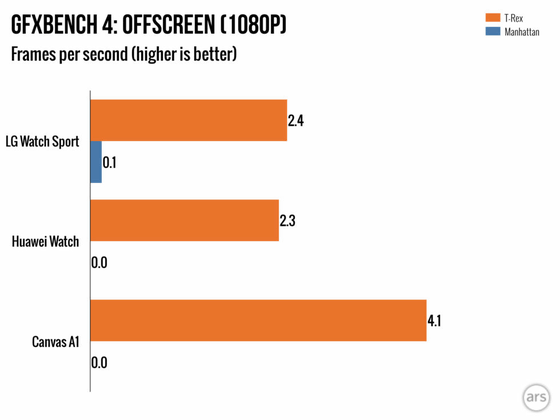
And again here Pixel XL is penetrating. There is only the latest high-performance smartphone, and we are launching the numerical value of another dimension.
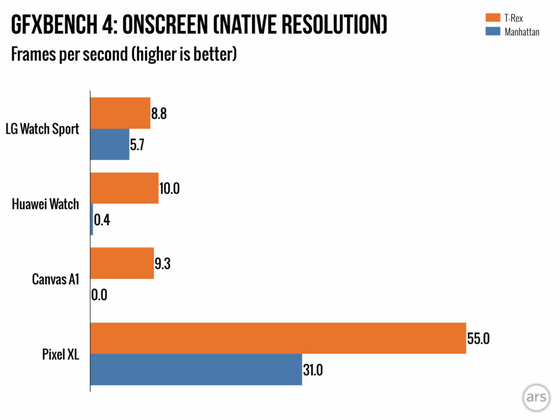
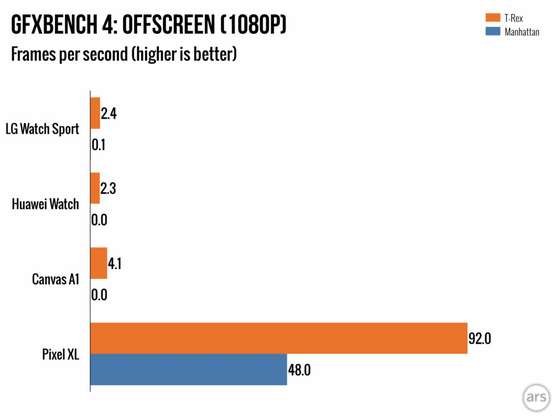
AndrobenchTest results of storage using. The higher the numerical value, the higher the performance, and with the sequential 32 MB benchmark, LG Watch Sport hit the highest numbers at both lead 134.43 MB / s and light 22.77 MB / s.
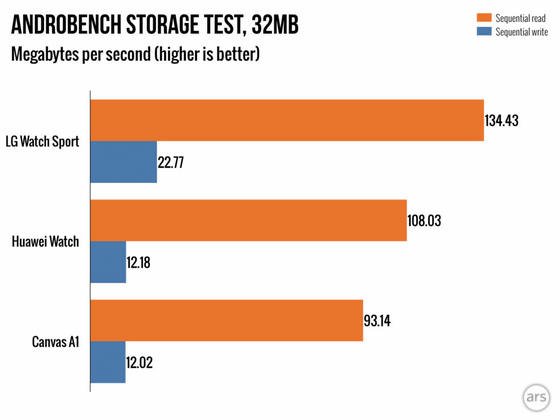
However, in the case of random 4 KB, Canvas A1 has resulted in the highest value only being read out.
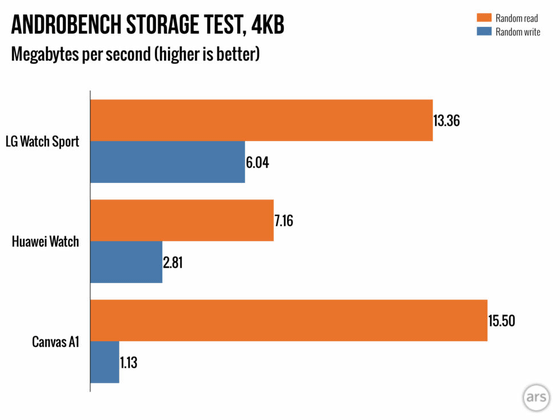
And every time Pixel XL attacks 3 attacks. Sure enough, I kicked out the different dimension figures and went home.
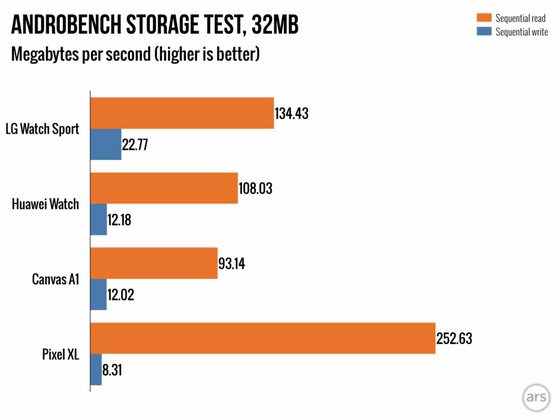
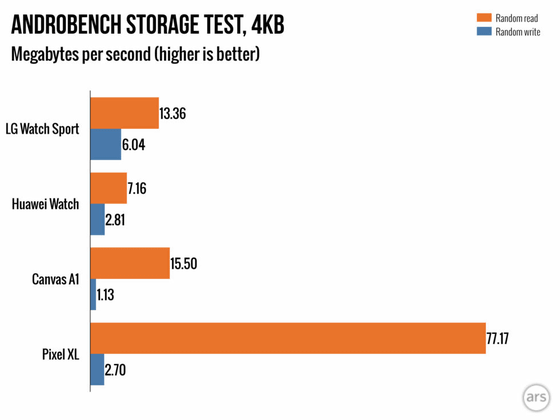
In the battery life test, LG Watch Sport is medium grade. A result of 332 minutes is shown by Wi - Fi browsing with the screen brightness set to 200 NITS. The top is 470 minutes of LG G Watch, the bottom isFossil Q FounderIn 191 minutes.
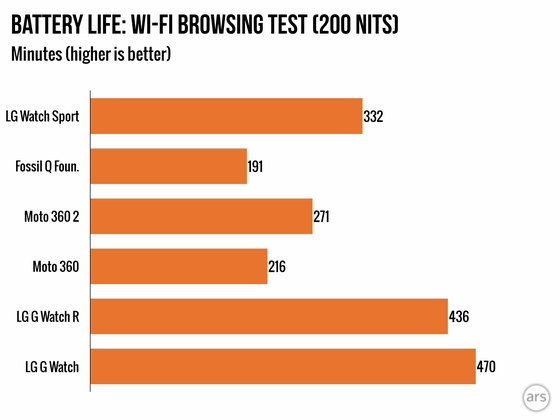
In summary, Ars Technica concludes, "Android Wear 2.0 will be a computer that can be worn on the wrist, but only if the hardware catches up." In the case of LG Watch Sport, which is the first model of Wear 2.0, the ability of hardware such as SoC does not keep up, so there seems to be a performance bottleneck part.
Nonetheless, there are plenty of advantages of the Wear 2.0 generation, such as QWERTY on-screen keyboard and crown ease of use, support for Android Pay and connection to LTE mobile networks. so. It is a part that seems regrettable that slow processing speed is pointed out.
Related Posts:


